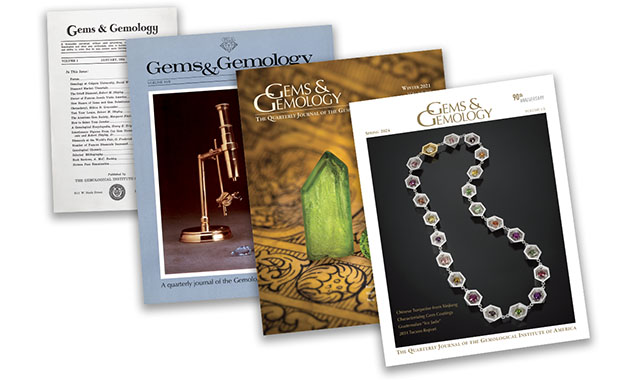Gems & Gemology at Ninety: Consistency and Change

In January 1934, GIA published the first installment of a new professional journal for members of the jewelry trade. Gems & Gemology editor and GIA founder Robert M. Shipley wrote, “It is our purpose to give our readers accurate and up-to-date information concerning gemstones. We intend to print not only new developments in the field of gems, but also interesting points which will serve the jeweler as sales tools.” At the time, there was only one similar publication: The Gemmologist, started by the National Association of Goldsmiths in London in 1931. G&G quickly made its mark. Initially appearing on a bimonthly basis, the journal adopted a quarterly publication schedule in 1936.
Since the earliest issues, G&G has covered a range of gem-related topics, going beyond the standard curriculum of GIA’s educational courses. In doing so, it has attracted top contributors and a global readership seeking practical and reliable information on important gemological developments.

The journal underwent a major redesign in 1981, transitioning to a larger format. This included new content sections, superbly detailed maps and illustrations, and the use of color photography, which is crucial to the study of gemstones. Formal peer review and other editorial processes were implemented to promote accuracy and readability. Recent years have seen additional upgrades, including free access to all G&G issues since 1934 and an online version of the journal, where print edition content is often supplemented by digital content such as videos of field expeditions and on-site expert interviews. Colorful wall charts on various topics—laboratory-grown diamonds, inclusions, and pearl classification, to name a few—have become a regular feature.
As our longtime readers know, the past two decades have witnessed the transformation of gemology into a far more technical field. Gem testing laboratories now employ a range of advanced scientific techniques. Gem treatment detection and colored stone country-of-origin determination remain the most challenging areas. Other important topics for study include the visual appearance, color stability, and optical phenomena of gems, as well as methods to better analyze and present complex sets of data.
As gemological research relies more heavily on scientific techniques and instrumentation, the need will grow for articles explaining these topics to a broad audience. The use of portable instruments for identifying gems will also continue. Meanwhile, geological field studies of deposits worldwide will provide new insights into the conditions of natural gem formation and the latest techniques for distinguishing them from synthetic and treated gem materials.
Looking beyond our 90th year, Gems & Gemology will continue to fulfill its original charter of providing up-to-date information on gemstones. We welcome well-researched contributions on all gemological topics, and we invite readers with a passion for gemology to join us.



